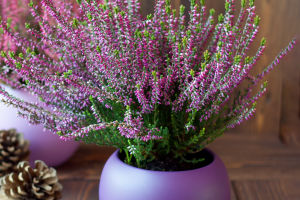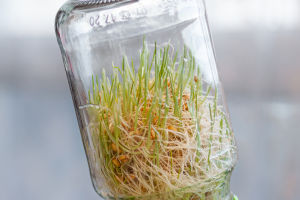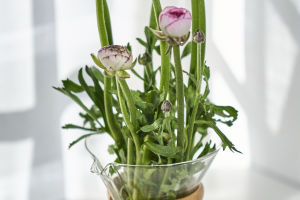
Ferns: Ancient Survivors

The phylum Pteridophyta belongs to the plant kingdom, possessing true vascular tissues in roots, stems, and leaves and reproducing via spores.
Most exhibit sporangia underneath the leaf's surface, forming varied patterns or lines of sporangial clusters, initially green and turning rust-colored with age, some uncovered and others equipped with diverse-shaped covers.
Lacking flowering and fruiting structures, ferns are visually challenging to distinguish from seed-bearing plants, displaying diverse forms ranging from tiny herbs under 5 millimeters to towering trees reaching 20 meters.
Comprising around 12,000 species globally, ferns thrive worldwide, except in deserts and extremely arid or cold regions, predominantly flourishing in tropical and subtropical zones. They prefer warm, shaded, and moist environments within forest undergrowth, contributing significantly to the herbaceous layer of forest vegetation and exhibiting ecological adaptations such as aquatic, terrestrial, lithophytic, epiphytic, or twining on tree trunks.
Related
 Heather's beauty, cautionary aspects, and human parallels are revealed naturally.
Heather's beauty, cautionary aspects, and human parallels are revealed naturally.
 Flower arranging contains artful expressions, essential techniques, and natural connections.
Flower arranging contains artful expressions, essential techniques, and natural connections.
 Sprouting Secrets: Seeds' Germination Mastery Unleashed!
Sprouting Secrets: Seeds' Germination Mastery Unleashed!
 Easy steps to flourishing potted gardens.
Easy steps to flourishing potted gardens.
 Cactus fruit: a nutritional powerhouse with skincare wonders, culinary magic, and environmental resilience.
Cactus fruit: a nutritional powerhouse with skincare wonders, culinary magic, and environmental resilience.
 Master these flower-arranging techniques and create beautiful floral arrangements!
Master these flower-arranging techniques and create beautiful floral arrangements!
Ferns represent the oldest terrestrial plants, flourishing predominantly from 350 to 270 million years ago during the late Devonian to the Carboniferous periods, dominating the Earth's flora at the time. Towards the end of the Permian period, ferns faced significant extinction, with their remains buried underground, forming coal deposits.
Being a primary food source for dinosaurs, ferns persisted post-dinosaur extinction; considered ancestors to gymnosperms, numerous gymnosperms are now relict species while ferns continue to thrive. Furthermore, ferns serve as ancestors to angiosperms, flourishing amidst today's floral abundance. Also known as "pteridophytes," ferns such as "Lepidodendron" and "Sigillaria" in ancient times contributed substantially to coal formation.
Present-day surviving ferns, except for the solitary surviving tree fern "Cyathea," are mostly herbaceous. Ferns lack flowers, fruits, or seeds, reproducing via spores. They are broadly categorized as the classes Psilotopsida, Equisetopsida, Marattiopsida (often referred to as eusporangiate ferns), and Polypodiopsida (the true ferns).
Ferns propagate annually from underground rhizomes, their young leaves curled upward and covered in white hairs, historically referred to as "fist vegetables" or "fern fists." As the leaves mature, they develop into beautiful, deep-green compound fronds. Wild ferns in mountainous regions exhibit robust growth, relying on their spore-covered leaf undersides to scatter in damp areas, maturing into new ferns through a complex process.
Fern leaves are categorized functionally into sporophylls (capable of producing sporangia and spores, termed fertile leaves) and trophophylls (solely conducting photosynthesis, incapable of generating sporangia and spores, termed sterile leaves). Some ferns exhibit homosporous leaves with similar shapes and functionalities, like common ferns such as "Osmunda," "Selaginella," and "Adiantum."
Others present heterosporous leaves, displaying two distinct leaf shapes and functionalities on the same plant body, like "Azolla," "Dryopteris," and "Salvinia."
Ferns boast versatile applications. Many species are edible, with tender shoots used as vegetables like fiddleheads, renowned for their delightful taste and hailed as the "king of mountain delicacies." The rhizomes of numerous ferns contain substantial starch quantities, allowing sugar production.
The underground rhizomes of "Matteuccia struthiopteris" can weigh between 20 to 30 kilograms. Several ferns are well-known medicinal plants, including "Ophioglossum," "Cyathea," and "Adiantum." "Gleichenia" and "Pteridium" serve as both fodder and fertilizers.

As an ancient lineage, ferns exhibit unique adaptation mechanisms to extremely shaded, polluted, or arid environments. They possess distinct advantages in indoor decoration, urban vertical greenery, and environmental restoration in severely metal-polluted regions. Currently, their horticultural application mainly focuses on indoor ornamentation, cut flowers, and outdoor ornamental plants, representing relatively new landscaping materials with relatively limited application scope.
In the grand tapestry of nature, ferns stand as ancient witnesses, their resilience spanning eons, embodying the intricate evolution of our planet's flora. From their prehistoric dominance to their present-day role as adaptable survivors, these verdant gems continue to weave their story, adding depth and resilience to the rich fabric of our natural world.